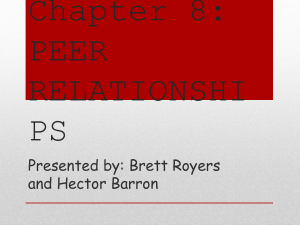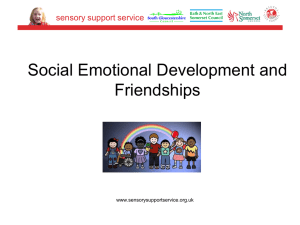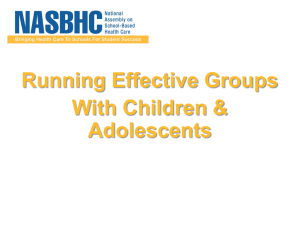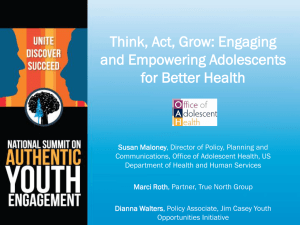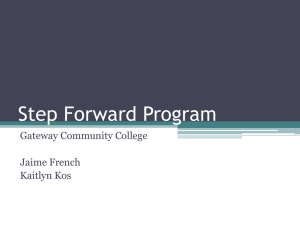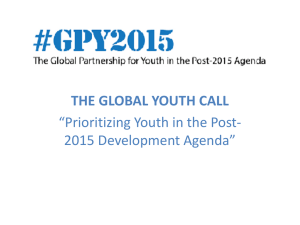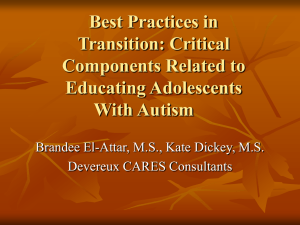Clinical Assessment of Interpersonal Relationships.
advertisement
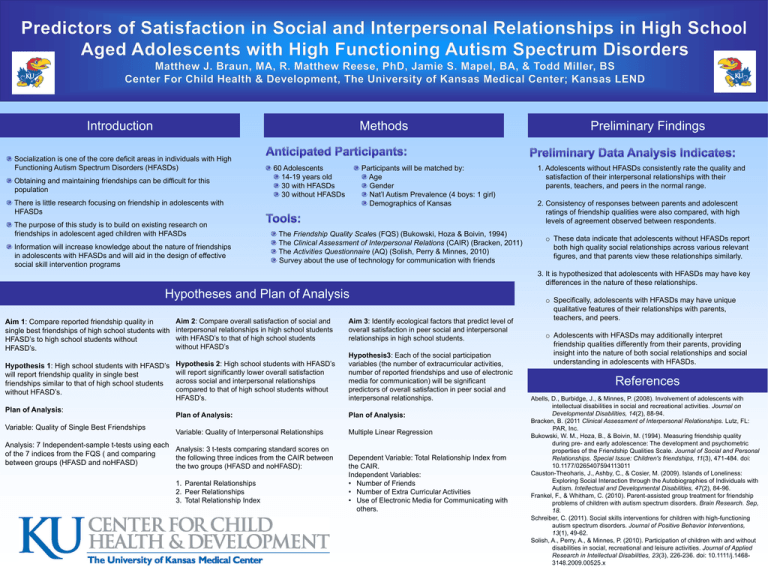
Introduction Methods Socialization is one of the core deficit areas in individuals with High Functioning Autism Spectrum Disorders (HFASDs) Obtaining and maintaining friendships can be difficult for this population 60 Adolescents 14-19 years old 30 with HFASDs 30 without HFASDs Participants will be matched by: Age Gender Nat’l Autism Prevalence (4 boys: 1 girl) Demographics of Kansas There is little research focusing on friendship in adolescents with HFASDs The purpose of this study is to build on existing research on friendships in adolescent aged children with HFASDs Information will increase knowledge about the nature of friendships in adolescents with HFASDs and will aid in the design of effective social skill intervention programs The Friendship Quality Scales (FQS) (Bukowski, Hoza & Boivin, 1994) The Clinical Assessment of Interpersonal Relations (CAIR) (Bracken, 2011) The Activities Questionnaire (AQ) (Solish, Perry & Minnes, 2010) Survey about the use of technology for communication with friends Preliminary Findings 1. Adolescents without HFASDs consistently rate the quality and satisfaction of their interpersonal relationships with their parents, teachers, and peers in the normal range. 2. Consistency of responses between parents and adolescent ratings of friendship qualities were also compared, with high levels of agreement observed between respondents. o These data indicate that adolescents without HFASDs report both high quality social relationships across various relevant figures, and that parents view these relationships similarly. 3. It is hypothesized that adolescents with HFASDs may have key differences in the nature of these relationships. Hypotheses and Plan of Analysis Aim 1: Compare reported friendship quality in single best friendships of high school students with HFASD’s to high school students without HFASD’s. Hypothesis 1: High school students with HFASD’s will report friendship quality in single best friendships similar to that of high school students without HFASD’s. Plan of Analysis: Variable: Quality of Single Best Friendships Aim 2: Compare overall satisfaction of social and interpersonal relationships in high school students with HFASD’s to that of high school students without HFASD’s Aim 3: Identify ecological factors that predict level of overall satisfaction in peer social and interpersonal relationships in high school students. Hypothesis 2: High school students with HFASD’s will report significantly lower overall satisfaction across social and interpersonal relationships compared to that of high school students without HFASD’s. Hypothesis3: Each of the social participation variables (the number of extracurricular activities, number of reported friendships and use of electronic media for communication) will be significant predictors of overall satisfaction in peer social and interpersonal relationships. Plan of Analysis: Plan of Analysis: Variable: Quality of Interpersonal Relationships Multiple Linear Regression Analysis: 7 Independent-sample t-tests using each Analysis: 3 t-tests comparing standard scores on of the 7 indices from the FQS ( and comparing the following three indices from the CAIR between between groups (HFASD and noHFASD) the two groups (HFASD and noHFASD): 1. Parental Relationships 2. Peer Relationships 3. Total Relationship Index Dependent Variable: Total Relationship Index from the CAIR. Independent Variables: • Number of Friends • Number of Extra Curricular Activities • Use of Electronic Media for Communicating with others. o Specifically, adolescents with HFASDs may have unique qualitative features of their relationships with parents, teachers, and peers. o Adolescents with HFASDs may additionally interpret friendship qualities differently from their parents, providing insight into the nature of both social relationships and social understanding in adolescents with HFASDs. References Abells, D., Burbidge, J., & Minnes, P. (2008). Involvement of adolescents with intellectual disabilities in social and recreational activities. Journal on Developmental Disabilities, 14(2), 88-94. Bracken, B. (2011 Clinical Assessment of Interpersonal Relationships. Lutz, FL: PAR, Inc. Bukowski, W. M., Hoza, B., & Boivin, M. (1994). Measuring friendship quality during pre- and early adolescence: The development and psychometric properties of the Friendship Qualities Scale. Journal of Social and Personal Relationships. Special Issue: Children's friendships, 11(3), 471-484. doi: 10.1177/0265407594113011 Causton-Theoharis, J., Ashby, C., & Cosier, M. (2009). Islands of Loneliness: Exploring Social Interaction through the Autobiographies of Individuals with Autism. Intellectual and Developmental Disabilities, 47(2), 84-96. Frankel, F., & Whitham, C. (2010). Parent-assisted group treatment for friendship problems of children with autism spectrum disorders. Brain Research. Sep, 18. Schreiber, C. (2011). Social skills interventions for children with high-functioning autism spectrum disorders. Journal of Positive Behavior Interventions, 13(1), 49-62. Solish, A., Perry, A., & Minnes, P. (2010). Participation of children with and without disabilities in social, recreational and leisure activities. Journal of Applied Research in Intellectual Disabilities, 23(3), 226-236. doi: 10.1111/j.14683148.2009.00525.x


